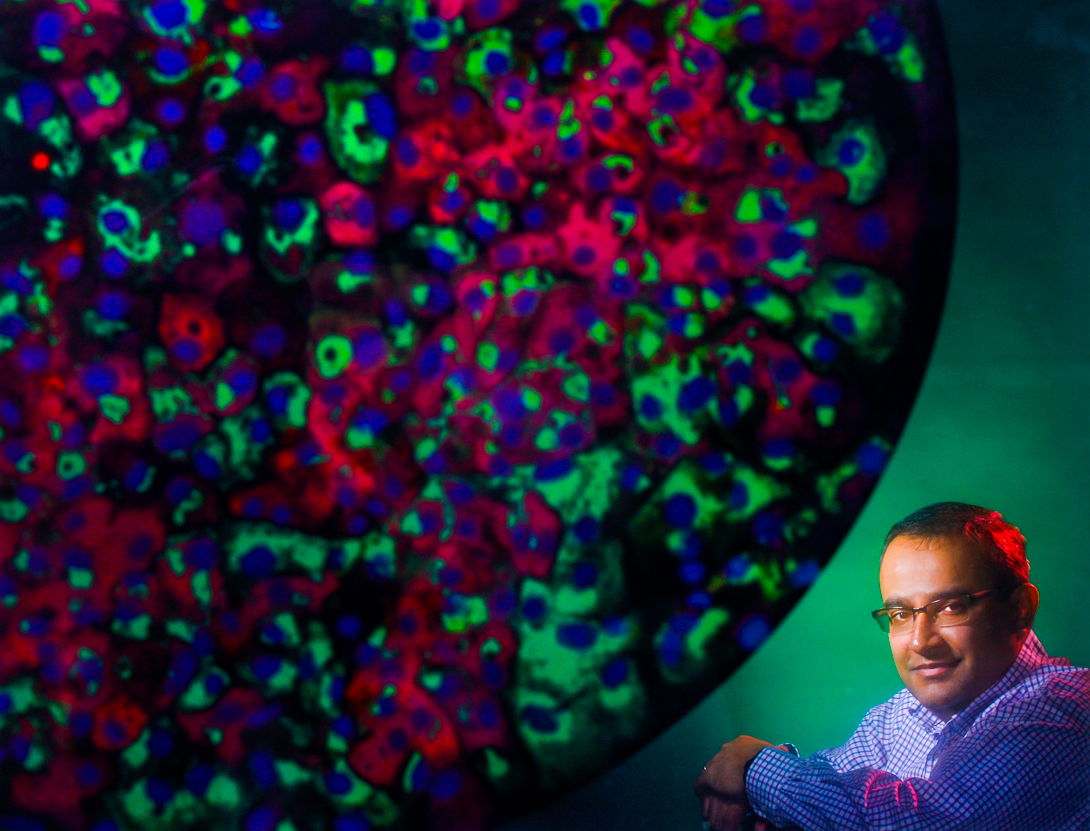Liver treatments in 3D
1

The human liver helps our bodies function in many ways: It filters out the nutrients from what we eat and drink, it helps remove toxins from the body through waste, it stores glycogen to keep our blood sugar up even when we are not eating, and it recycles our blood by breaking down old and damaged blood cells.
Being a multifaceted organ, however, makes it highly complex to treat. The only option in modern medicine for treating a failing liver is with a transplant.
Salman Khetani, an associate professor of biomedical engineering, hopes to advance our understanding and treatment of the vital organ by engineering the first-ever comprehensive 3D-printed model of a liver that includes all three hepatic, vascular, and biliary components.
To do this, Khetani will collaborate with Ramille Shah — also of UIC biomedical engineering — whose laboratory specializes in 3D-printing biomaterials. Together, they will use an innovative miniature 3D gel created by Khetani as a bioink to make a more accurate liver model, which can then be used to test the safety and efficacy of new drugs intended for end-stage liver failure patients.
“No one has 3D-printed a liver with all three major compartments,” Khetani said. “In the future, we could [test them for] end-stage liver failure. It may not replace a transplant, but it could keep someone alive while they wait for one.”